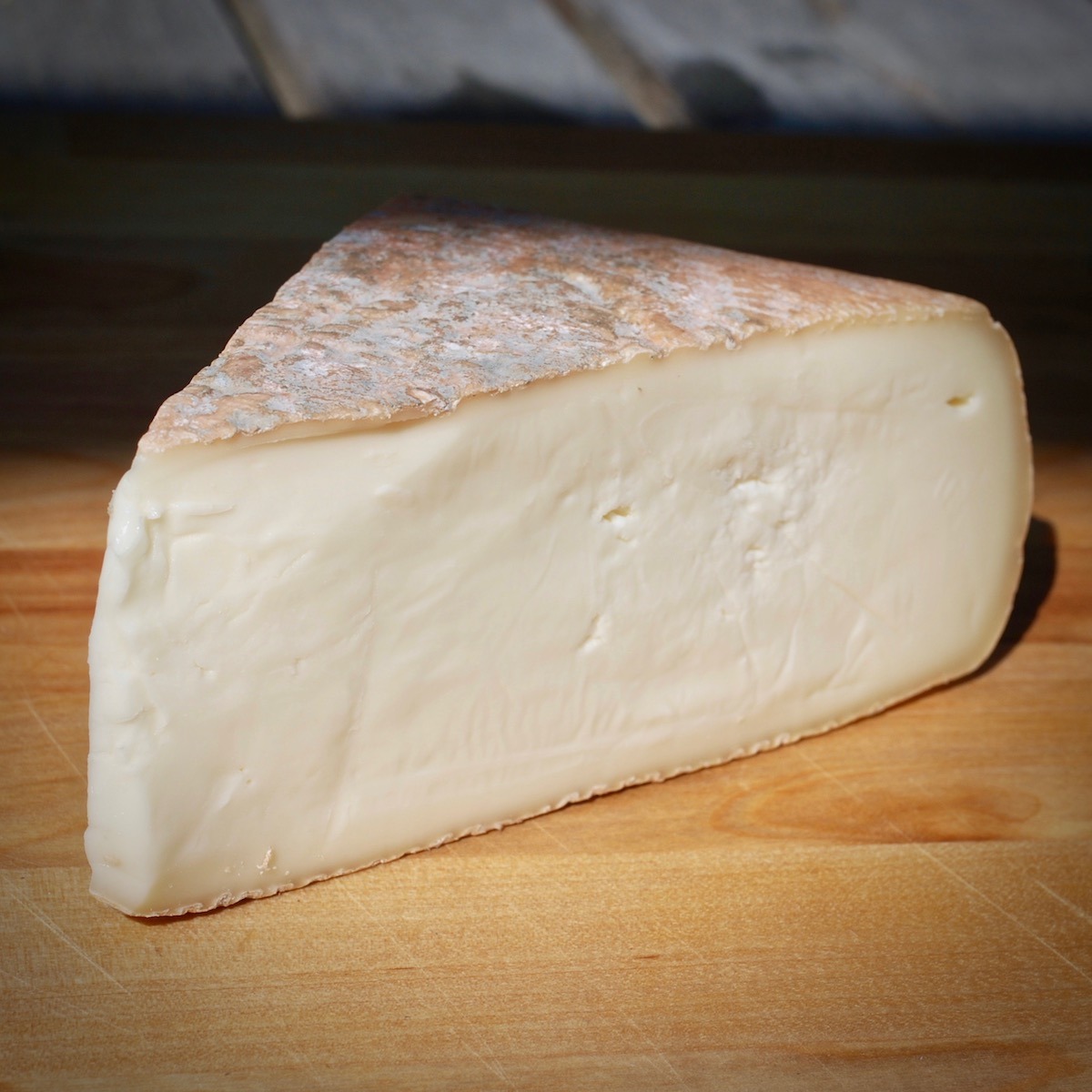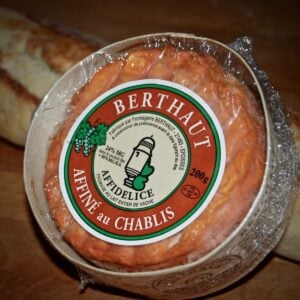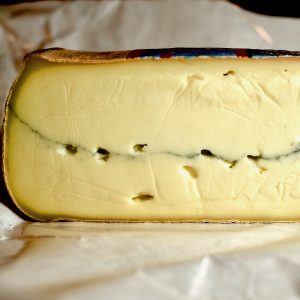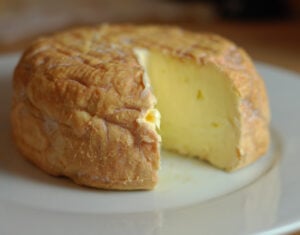A Cheese Primer for Buying Cheese – My Top Tips for Buying Cheese
As a huge fan of cheese and frequent cheese buyer, I wanted to share this helpful tips on buying cheese.
1. IMPORTANT – Find a cheese shop with knowledgeable staff willing to teach you and let you taste as many cheeses as you want.
Most of us don’t even think twice about asking someone for advice at the local wine shop or going to the local gourmet shop on a Friday evening for complimentary tastings. So start thinking the same way about cheese.
Once you graduate from the shrink-wrapped cheese in the dairy section of your grocery store, cheese can get very pricey. When looking at cheeses that can cost upwards of $20/pound, you want to make sure that you’re going to like what you’re buying. The only way to know for sure is to taste.
Trust me, there are so many different types of cheeses from all parts of the world that you need to find an expert to help educate you and guide your choices, and any good cheesemonger will be happy to let you sample the wares.

2. Get to know the person who sells you your cheese, the Cheesemonger. Not a particularly nice sounding name, but he or she will be able to point you in the right direction once they know your tastes.
This goes along with Point 1. Although there is something to be said about trying cheeses from different shops in your area, it also pays to develop a relationship with a particular cheesemonger.
There are a few benefits to this. First, they will learn your tastes and likely keep you in mind when new cheeses come in that they think you might like.
Also, a cheesemonger will likely linger with you and answer your questions if you are a repeat customer. Of course, most cheesemongers are passionate about cheese, but they are also in business. As a business person, it just makes good business sense to court your repeat business.
Lastly, you might hear of an interesting-sounding cheese that you would like to try, and if you have a good relationship with your cheesemonger, they will most likely be happy to make a special order.
3. Ask to try a different cheese every time you go into a market that sells cheese.
With the vast array of specialty cheeses available, limiting yourself to just a favored two or three cheeses would be a shame. Instead, trying one or two new kinds of cheese whenever you visit the cheese shop can help expand and educate your palate and expose you to cheeses you might otherwise not have tried.
If you are partial to hard cheeses, go out on a limb and try a younger soft cheese. Not a fan of blue cheese? There are a lot of different kinds. Maybe you’ll find one you like. Not sure about very pungent cheese? Go ahead and ask for a sample.
You are not obligated to buy everything you taste, so there is no pressure. However, I would advise you to buy something after trying several kinds of cheese. Remember, as a cheese lover; your cheesemonger enjoys sharing his knowledge. As a business person, though, his payoff is cold, hard cash!

4. Start with the three main milk types (goat, sheep, or cow). Figure out which you like best, second, third. If there is one you dislike, fine, you just made it easy for future choices.
Each of the three main kinds of milk used to make cheese has its own unique characteristics and flavor profiles which, of course, show up in the resulting cheese. Ask to try young, mild cheeses from each type of milk to understand these characteristics. From there, you should be able to note your preference.
Do you like the buttery richness of cow’s milk cheeses, the tang of goat’s milk cheeses, or the mellow nuttiness of sheep’s milk cheese? Once you know your preference, you can start to taste more distinctive cheeses made from each milk.
5. Try different textures (soft, semi-soft, hard) to see which appeals to you most.
The cheese texture can run the gamut from extremely hard and granular (think Parmesan Reggiano) to runny (think aged Brie). Texture certainly plays a part in taste sensation. Mouth-feel is essential to the overall flavor profile.
If you haven’t experimented with trying cheeses of varying textures, you have the perfect opportunity to do so at your local cheese shop. Most cheeses change texture as they age, so you can even ask to try younger and aged versions of the same cheese to see if you are drawn to a particular texture.
6. Try the same cheese from different countries. You will be surprised at some of the differences.
Like wine, the flavor of the wine is affected by terroir–the climate, the slope of the pasture land, the diet available to the animals who gave the milk, and what time of year the animals were milked all factor into the final flavor profile of the cheese.
For this reason, a Parmesan-style cheese from South America will taste very different from authentic Parmesan Reggiano cheese. But, again, your cheesemonger can help you find cheeses from different countries in similar styles to help you further expand your palate.

7. Experiment with food and wine. Different cheeses go better with some foods and wines than others.
I keep returning to wine, but wine and cheese each start with a natural raw product (grape juice and milk, respectively) that is then minimally processed and aged for different amounts of time to create something entirely different. Nevertheless, I feel justified in using the wine analogy, so go with it.
Like different wines go better with some foods than others; the same can be said of cheese. So have a cheese tasting sometime.
Work with your cheesemonger to choose cheeses in differing styles and then have condiments available to try with each. Some good choices are spiced nuts, jams, jellies, honey, chutneys, fresh fruits, and mustard.
Then, try all the cheeses with all the different condiments. You’ll find that some of the pairings work much better than others.
See if you can detect a pattern. For example, do milder cheeses go well with sweeter or more assertive condiments? Are creamy cheeses best paired with crunchy condiments or with jam?
8. Ask or read about what pairing works and then try it.
There is usually a set standard for pairings. For example, with pasta, chunky sauces are paired with hearty shapes, while smooth sauces are often paired with long, smooth shapes. The prevailing wisdom when it comes to wine (although this is starting to change) is to drink red wines with red meats and white wines with poultry or fish.
In the cheese world, there are some classic pairings as well.
Parmesan Reggiano and aged balsamic vinegar come to mind. Brie and rich jams, as well. Do a little research on classic cheese pairings, and then taste them. As with Number 7, see if you can detect a pattern.
This is all part of expanding and educating your palate. It’s a lot of work, isn’t it?! But at least it’s fun work.

9. Read about cheese in one of the many excellent books on the subject.
Several excellent books about cheese are available (including whatever you want to include). If you don’t have access to a beautiful local cheese shop, or you don’t want to feel obligated to spend money every time you want to learn about a couple of new cheeses, having a good cheese resource book on hand can be invaluable.
You can find information on everything from the steps in the cheese-making process to the characteristics of different cheeses to some great ideas for food and wine pairings.
10. Check out my main Favorite Cheese Pleasers
I am lucky enough to have a great relationship with a cheesemonger in my area, so whenever he turns me on to a great cheese or when I find a cheese that I like, I will add an article about that cheese on my Cheese Pleasers page. So check back frequently to read about my latest discoveries.
Good Cheese books to learn from
 |  |  |  |














